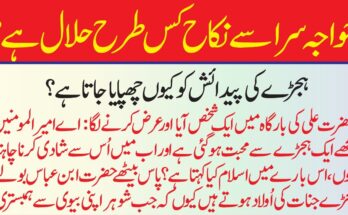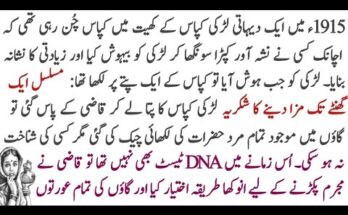In the world of digital marketing, conversion is the ultimate goal. Whether you’re selling products, services, or ideas, getting your audience to take action—be it clicking a link, signing up for a newsletter, or making a purchase is critical for your business’s success. One of the most powerful tools at your disposal to achieve this is copywriting. Well-crafted copy can make the difference between a visitor scrolling past your page and one who becomes a customer or lead.
Copywriting is both an art and a science. It requires understanding human psychology, behavior, and emotions, and combining these insights with clear, persuasive writing. Effective copy can build trust, address pain points, highlight benefits, and create a sense of urgency that drives action.
In this article, we will explore the best copywriting tips for conversions. These actionable strategies will help you write compelling, high-converting copy that not only attracts attention but also converts visitors into customers.
1.Understand Your Target Audience
Before you write a single word, it’s crucial to know who you’re writing for. Effective copywriting is all about connecting with your target audience on a personal level. This connection is built on an understanding of their needs, desires, pain points, and motivations. Here’s how you can better understand your audience:
Create Buyer Personas
Buyer personas are semi-fictional representations of your ideal customers. To build these personas, gather data from your current customers, market research, surveys, and social media. A detailed persona includes information like:
Demographics (age, gender, income, education)
Psychographics (values, interests, lifestyle)
Pain points (challenges, frustrations, desires)
Purchasing behavior (what drives them to make a purchase)
Conduct Market Research
Market research will give you a clear view of the trends, language, and concerns that matter most to your audience. You can conduct this research through online surveys, focus groups, or even by analyzing competitors’ copy.
Speak Their Language
Once you’ve created your buyer personas and gathered research, make sure your copy speaks directly to your audience’s language. If your customers are technical, use industry-specific jargon. If they’re more general, keep the language simple, relatable, and easy to understand.
Focus on Benefits, Not Features
One of the biggest mistakes in copywriting is focusing too much on product features instead of the benefits. While features are important, they don’t resonate with customers unless they clearly demonstrate how those features solve a problem or make the customer’s life better.
The Feature vs. Benefit Distinction
Feature: “This laptop has 16GB of RAM.”
Benefit: “With 16GB of RAM, this laptop can handle your most demanding tasks without lag, ensuring you stay productive all day long.”
Emotional Appeal
Remember, many purchasing decisions are driven by emotions. While logical reasoning is important, emotional triggers such as fear of missing out (FOMO), excitement, and desire for success can be just as influential in the decision-making process. For instance, a benefit could emphasize how your product or service will improve the customer’s lifestyle, save them time, or give them a competitive edge.
Craft a Compelling Headline
The headline is the first thing people see when they land on your page, and it’s your first (and often only) chance to grab their attention. A great headline should spark curiosity, address a pain point, or promise a solution.
Use Numbers and Specifics
Numbers attract attention because they’re specific, measurable, and easy to understand. Headlines like 10 Ways to Boost Your Productivity” or How We Saved Our Clients $1 Million Last Year” can quickly grab the reader’s eye.
Make It Benefit-Driven
Your headline should make it clear what the reader will gain by reading your copy or taking action. For example, Lose 10 Pounds in 30 Days with This Simple Plan” promises a direct benefit—weight loss—while piquing the reader’s curiosity.
Keep It Simple
A good headline is short and to the point. Avoid complex phrases or jargon that may confuse your audience. Aim for clarity above all else.
Use Persuasive Language
Words have immense power, and in copywriting, they can influence the decisions your audience makes. Here are a few tips on using persuasive language to your advantage:
Use Action-Oriented Verbs
Action verbs encourage readers to take immediate action. Use words like “discover,” “grab,” “get,” “unlock,” or “start” to move the reader toward your call-to-action (CTA).
Create a Sense of Urgency
Urgency is one of the strongest psychological triggers in copywriting. By creating a sense of scarcity or time pressure, you can encourage your audience to act immediately.
Examples: Only 5 left in stock,” Offer ends tonight,” or Limited-time deal.”
Add Social Proof
People are more likely to trust a product or service that others have already endorsed. Incorporate testimonials, reviews, or case studies to build trust and influence purchase decisions.
Examples: Join over 1,000 happy customers,” Rated 4.9/5 stars by 500+ users.”
Use the Word “You”
Directly addressing the reader using the word you” makes the copy feel more personal and relatable. This simple technique helps readers envision themselves using the product or service, which increases the likelihood of conversion.
Make Your Copy Scannable
Online readers don’t have the patience to read lengthy paragraphs of text. Instead, they prefer to skim through content to quickly find the information they’re looking for. To improve readability and increase conversions, make your copy easy to scan.
Use Short Paragraphs
Keep paragraphs between two and four sentences to avoid overwhelming the reader. This makes your copy more digestible and easier to scan.
Use Bullet Points
Bullet points help break up dense information and highlight key points. They are ideal for summarizing benefits, features, or steps.
Use Subheadings
Subheadings break up your copy and guide the reader through your content. They should provide a glimpse of what the next section will cover and help keep the reader engaged.
Bold Key Points
Highlight key words or phrases by bolding them to draw attention to the most important aspects of your copy. This ensures that even if readers skim, they still absorb the essential message.
Create an Irresistible Call-to-Action (CTA)
The CTA is arguably the most important element of your copy. It tells the reader what to do next. A strong CTA leads to conversions, whether it’s making a purchase, signing up for a newsletter, or scheduling a demo.
Use Action Words
Your CTA should use clear, action-oriented language that tells the reader exactly what they need to do. Examples include:
Start Your Free Trial”
Buy Now and Save 20%”
Get Instant Access”
Sign Up Today”
Make It Stand Out
Your CTA should be visually distinct from the rest of your copy. Use contrasting colors, bold fonts, or buttons to make it pop. Ensure that it’s above the fold (visible without scrolling) and repeated in strategic places on the page.
Highlight Value or Urgency
Add urgency or value to your CTA to increase conversions. For instance, instead of just saying Sign Up,” try Sign Up Today to Get a 10% Discount” or Sign Up Now – Limited Spots Available.”
A/B Testing and Optimization
No matter how well-crafted your copy is, there’s always room for improvement. A/B testing allows you to test different versions of your copy and determine which one performs better.
Test Different Headlines
Headlines have a massive impact on conversion rates. Try testing variations of your headlines to see which one grabs your audience’s attention and leads to more clicks or conversions.
Test CTAs
The wording, color, placement, and style of your CTA can all affect conversions. Conduct tests to determine the most effective combination.
Test Length and Tone
Different audiences respond to different types of copy. Some may prefer short, punchy content, while others might prefer a more detailed, educational approach. Test different lengths and tones to see what resonates best with your audience.
Analyze Results
Use data to assess the performance of your A/B tests. Tools like Google Analytics, Hotjar, and Crazy Egg can provide valuable insights into which elements of your copy are performing well and which need improvement.
Be Clear and Concise
Clarity is key when writing persuasive copy. Avoid jargon, vague phrases, or overly complicated language that could confuse the reader. The goal is to make it as easy as possible for your audience to understand your message and take action.
Examples of Clear, Concise Copy:
Get free shipping on orders over $50.”
Sign up for exclusive discounts and offers.”
In contrast, vague or confusing copy can hinder your chances of converting visitors into customers.
Conclusion
Great copywriting can be the difference between a successful campaign and a missed opportunity. By focusing on your target audience, emphasizing benefits, using persuasive language, and creating an irresistible CTA, you can write copy that doesn’t just attract attention but also drives conversions. Always test and optimize your copy to ensure it resonates with your audience, and never underestimate the power of clarity and simplicity.
Mastering these best copywriting tips will not only improve your ability to persuade but also help you build stronger relationships with your customers, ultimately increasing your sales and conversions over time.




